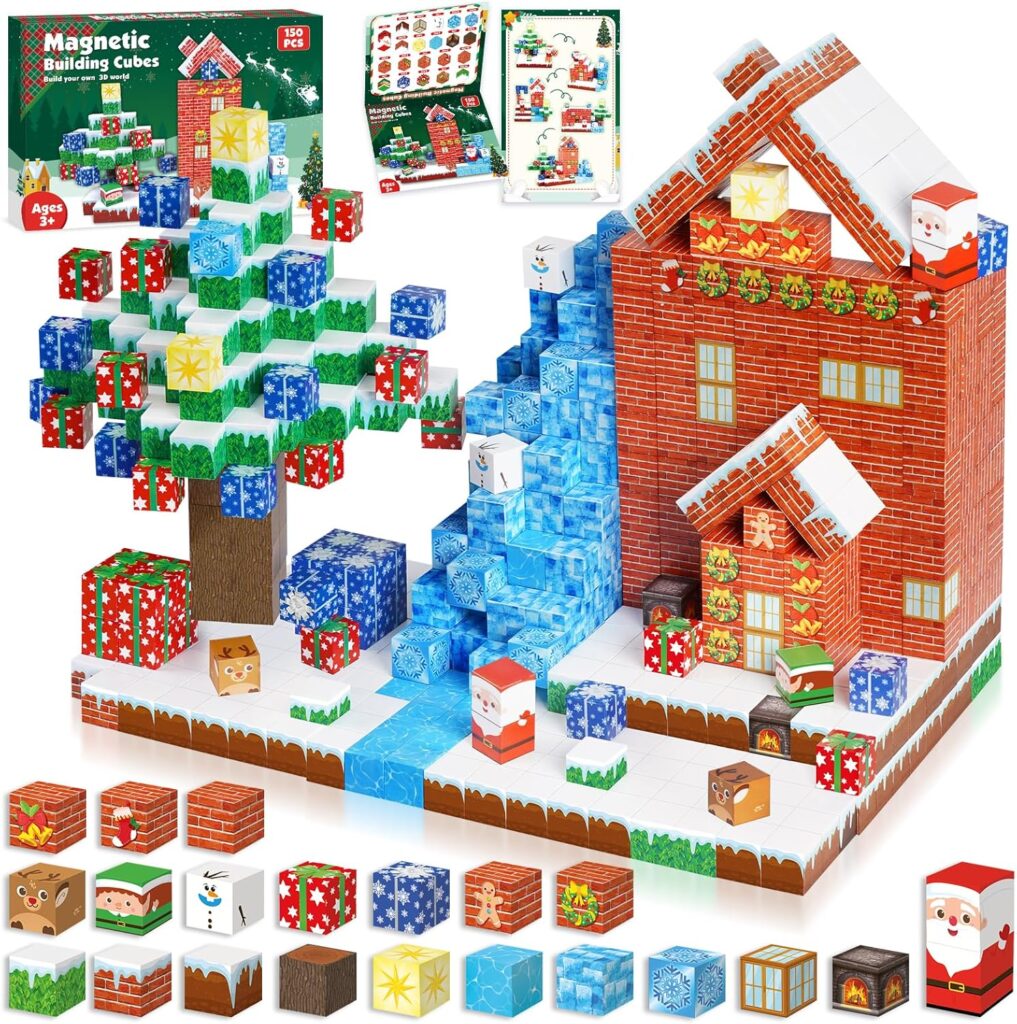Things to Note When Buying Magnetic Tiles in Europe
Introduction
Magnetic tiles are popular educational toys that use embedded magnets to allow children to build structures creatively. In Europe, where safety and quality standards are stringent, buyers must navigate various factors to ensure they select the right products. This article provides impartial advice on key considerations for purchasing magnetic tiles, helping businesses and parents make informed decisions.
From regulatory compliance to material quality, understanding these aspects can prevent potential issues and enhance the user experience. Whether you’re a retailer or an educator, this guide aims to educate on best practices for acquiring these toys in the European market.
What Are Magnetic Tiles?
Magnetic tiles consist of colorful plastic pieces with magnets inside, designed for open-ended play. They encourage STEM learning by allowing users to construct 3D models, fostering creativity and problem-solving skills. In Europe, these toys are often used in schools and homes to promote early childhood development.
Originating from simple geometric shapes like squares and triangles, magnetic tiles come in various sets with different themes. It’s essential to recognize that not all tiles are created equal, as variations in design and materials can affect durability and safety.
Regulatory Compliance and Safety Standards
Europe has strict regulations for toys, primarily governed by the EU Toy Safety Directive. When buying magnetic tiles, ensure they comply with EN 71 standards, which cover mechanical, chemical, and flammability safety aspects. Non-compliant products can pose risks like choking hazards from small magnets.
Buyers should verify that tiles are tested for phthalates, heavy metals, and other harmful substances. The CE marking is a key indicator of compliance, meaning the product meets EU health, safety, and environmental requirements. Always request certification documents from suppliers to avoid legal issues.
Additionally, consider the REACH regulation, which restricts chemicals in products. For magnetic tiles, this includes ensuring magnets are securely enclosed to prevent accidental ingestion, a common concern highlighted by European health authorities.
Quality and Material Considerations
The quality of materials directly impacts the longevity and safety of magnetic tiles. Opt for tiles made from high-grade, non-toxic ABS plastic, which is durable and resistant to wear. Inferior materials may crack or fade quickly, leading to frustration for users.
Magnets should be strong neodymium types, but they must be properly shielded to avoid interference or injury. Check for smooth edges and precise manufacturing to ensure pieces fit together seamlessly, enhancing the building experience. Poor quality can result in tiles that don’t align correctly.
From an environmental perspective, look for eco-friendly options. Some manufacturers use recyclable plastics or sustainable sourcing, aligning with Europe’s growing emphasis on green practices. This not only benefits the planet but also appeals to environmentally conscious consumers.
Sourcing and Supplier Reliability
In Europe, reliable suppliers are crucial for consistent product quality. Research suppliers with a proven track record, such as those participating in trade shows or certified by bodies like ISO. B2B buyers should prioritize partnerships with transparent supply chains to trace product origins.
Consider the supplier’s reputation for ethical practices, including fair labor and environmental standards. In countries like Germany or the UK, suppliers often adhere to additional national guidelines, providing an extra layer of assurance. Always review samples before bulk purchases.
Diversifying suppliers can mitigate risks like supply chain disruptions. For instance, sourcing from multiple EU countries reduces dependency on a single region, which is particularly important amid global events affecting logistics.
Cost and Value Assessment
Pricing for magnetic tiles in Europe varies based on factors like set size, material quality, and brand. While budget options exist, cheaper tiles may compromise on safety or durability, potentially increasing long-term costs due to replacements.
Evaluate the value by comparing features such as the number of pieces, included accessories, and educational value. In markets like France or Italy, premium sets with advanced designs often justify higher prices through enhanced learning outcomes.
Factor in currency fluctuations and taxes, as the EU’s VAT rates can affect final costs. Businesses should conduct cost-benefit analyses to ensure purchases align with budget constraints without sacrificing quality.
Logistics and Shipping Considerations
Transporting magnetic tiles across Europe involves navigating customs and shipping regulations. Ensure products are packaged securely to prevent magnet demagnetization or damage during transit, which could occur from improper handling.
Use reliable logistics partners familiar with EU trade agreements, such as those under the Single Market. This helps avoid delays and additional fees. For international shipments within Europe, comply with Incoterms to clarify responsibilities between buyers and sellers.
Consider storage and distribution once products arrive. Warehouses should maintain controlled environments to preserve the tiles’ integrity, especially in varying climates across countries like Scandinavia or the Mediterranean.
Environmental and Sustainability Factors
Europe’s focus on sustainability means buyers should prioritize magnetic tiles that are eco-friendly. Look for products made from recycled materials or those with minimal packaging to reduce waste, in line with directives like the EU’s Circular Economy Action Plan.
Assess the carbon footprint of manufacturing and shipping processes. Suppliers using renewable energy or local production can lower environmental impact, appealing to green-minded buyers in regions like the Netherlands or Sweden.
Encourage reuse and recycling of tiles at the end of their lifecycle. Educating users on proper disposal methods can extend the product’s life and align with Europe’s waste reduction goals.
Cultural and Educational Relevance
In Europe, magnetic tiles should align with local educational curricula. For example, in the UK, they might support the National Curriculum’s emphasis on STEM subjects, while in Spain, they could enhance bilingual learning programs.
Cultural adaptations, such as multilingual packaging or designs reflecting European themes, can make tiles more appealing. Buyers should ensure products are versatile for different age groups and learning styles prevalent in European schools.
Additionally, consider inclusivity features, like tiles suitable for children with disabilities, to broaden market appeal and comply with EU equality standards.
After-Sales Support and Warranty
Reliable after-sales support is vital for magnetic tiles, as it ensures issues like defects can be addressed promptly. Look for suppliers offering warranties, typically 1-2 years, covering manufacturing faults.
In Europe, consumer protection laws require clear return policies. Verify that suppliers provide easy access to customer service, including online resources or regional representatives, to handle queries efficiently.
This support enhances trust and satisfaction, encouraging repeat business and positive word-of-mouth in competitive markets.
Frequently Asked Questions
Below are common questions about buying magnetic tiles in Europe, answered to provide clarity.
What certifications should I look for on magnetic tiles?Key certifications include the CE mark and EN 71 compliance, ensuring the toys meet EU safety standards for materials and construction.
How can I verify the authenticity of magnetic tiles?Check for official labels, request batch testing reports, and purchase from reputable suppliers with transparent sourcing practices.
Are there age restrictions for magnetic tiles in Europe?Yes, most are recommended for children aged 3 and above due to choking hazards; always follow the manufacturer’s guidelines and local regulations.
What should I do if magnetic tiles arrive damaged?Contact the supplier immediately with documentation, and use any provided warranty to arrange replacements or refunds under EU consumer rights.
How do environmental regulations affect magnetic tile purchases?Products must comply with REACH and other EU laws on chemicals, promoting safer, more sustainable options in the market.
Conclusion
In summary, buying magnetic tiles in Europe requires careful attention to safety standards, quality materials, and regulatory compliance to ensure a positive experience. By prioritizing factors like supplier reliability, environmental sustainability, and cultural relevance, buyers can make choices that support educational goals effectively. This guide serves as a comprehensive resource, empowering informed decisions that benefit both businesses and end-users in the dynamic European market.




